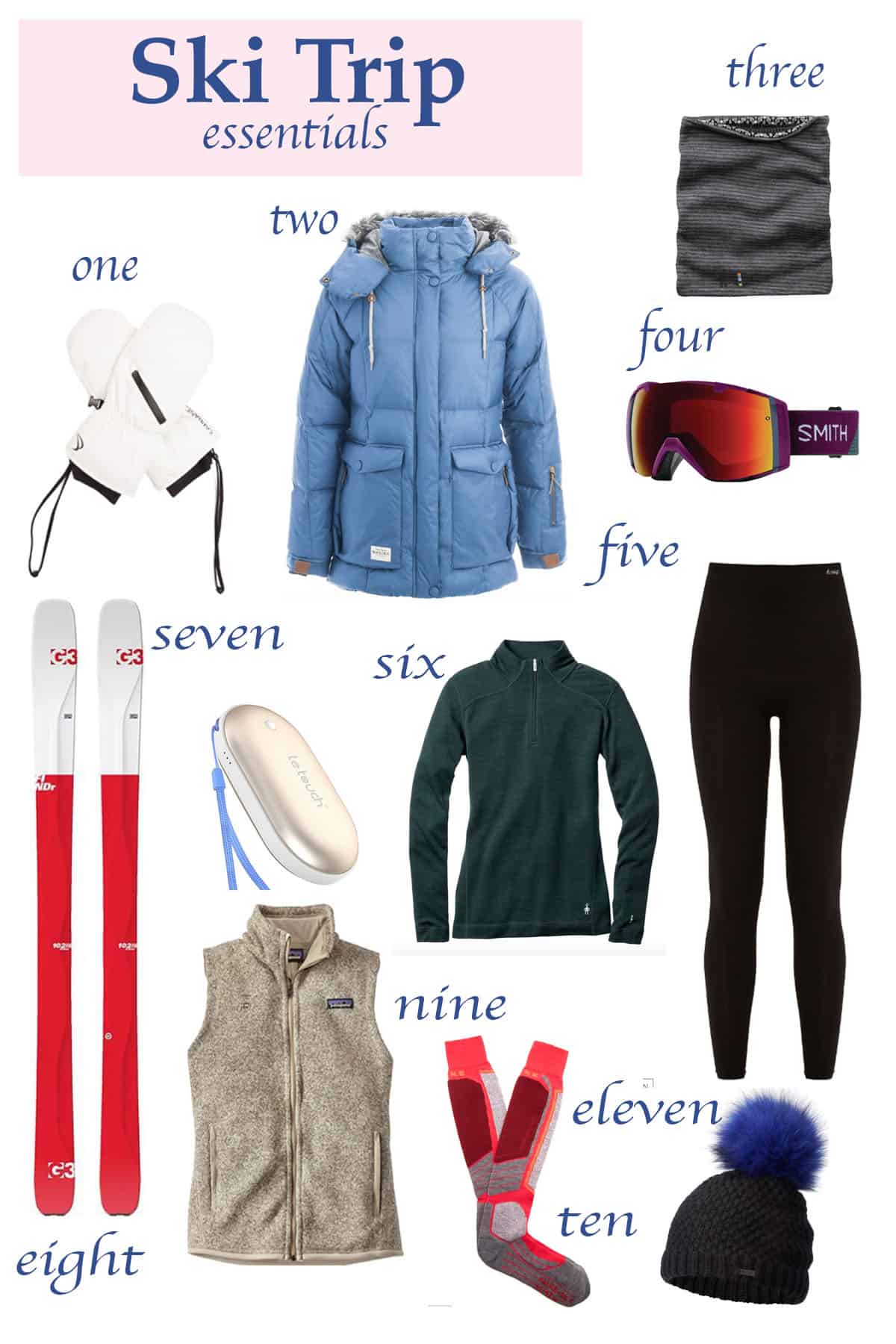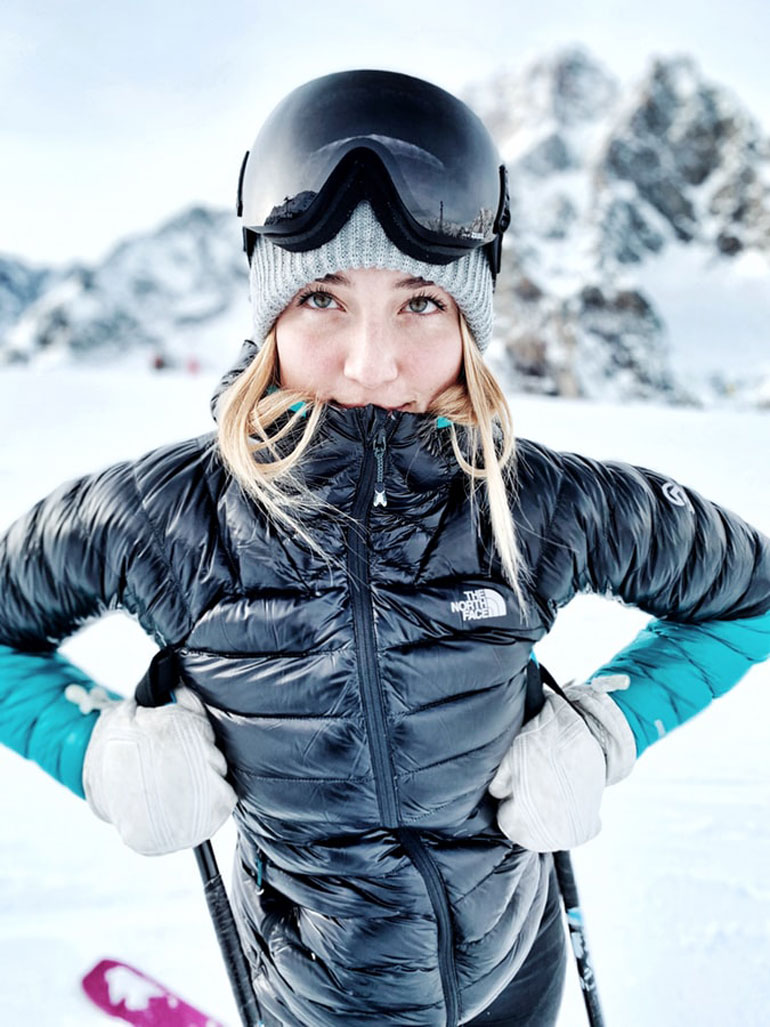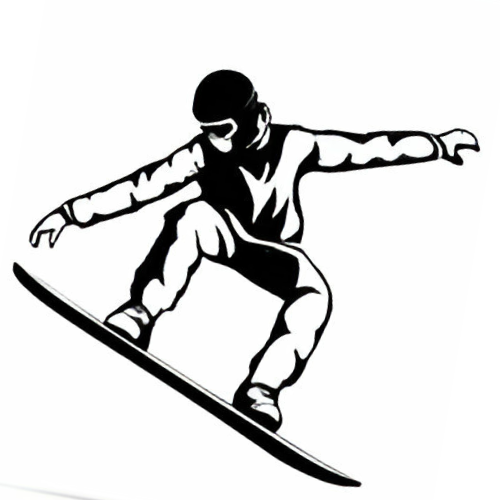For skiing, you need thermal underwear, insulated layers, a waterproof ski jacket, pants, gloves, and a hat. Goggles and sunscreen are also essential to protect against glare and UV rays.
Skiing is an exhilarating sport that combines speed, the beauty of snow-covered landscapes, and the joy of mastering challenging slopes. As such, proper attire is not only a matter of comfort but also a safety requirement. Your clothing must be able to keep you warm in the frigid temperatures often encountered on the mountains.
At the same time, it should provide the freedom to move effortlessly and protect you from moisture both inside and out. Quality attire designed specifically for skiing can help regulate your body temperature, wick away sweat, and prevent snow from making contact with your skin. Choosing the right clothing ensures that your focus remains on the slopes, making your skiing experience enjoyable and safe.
Gearing Up For The Slopes
Ski season is here, and it’s time to pack! Picking the right clothes can make or break your snowy adventures. Whether you’re flying down mountains or sipping cocoa by the lodge, the key is to stay warm, dry, and comfortable. Ready to find out what to bring?
Dressing In Layers
Layering is the secret to staying cozy and handling the cold.
- Base Layer: It’s all about moisture-wicking materials like merino wool or synthetic fabrics. Avoid cotton, as it holds dampness.
- Middle Layer: This is your insulating layer. Think fleece or down jackets to trap warmth.
- Outer Layer: Your shield against wind and water. Grab a breathable, waterproof ski jacket and pants.
- Don’t forget accessories like hats, gloves, and socks!
Weather Considerations
The weather dictates your gear choices.
| Condition | Clothing Choice |
|---|---|
| Cold | Extra insulating layers, glove liners |
| Sunny | Lighter layers, UV protection goggles |
| Wet | Waterproof outerwear, gaiters |
| Windy | Windproof outer layer, neck gaiter |
Always check the weather forecast before you dress, and pack extras just in case!
Starting With The Basics
Before hitting the slopes, it’s important to dress correctly. Proper ski attire keeps you warm and dry all day. The right clothes can make skiing comfortable and fun. Let’s dive into what you need, starting with the basics.
Thermal Underwear
Thermal underwear forms the base layer of your ski outfit. This layer sits right against your skin. It should be both warm and moisture-wicking. This keeps sweat away from your body. Here’s what to look for:
- Synthetic fabrics or merino wool work best for warmth.
- Choose a snug fit for better insulation.
- Avoid cotton, as it holds moisture and can make you feel cold.
Breathability And Insulation
Two words matter most for your ski clothes: breathability and insulation.
| Layer | Function |
|---|---|
| Mid Layer | Insulation keeps you warm. |
| Outer Layer | Breathable fabric lets moisture out. |
Your mid layer might be a fleece or down jacket. The outer layer is a ski jacket and pants. They shield you from wind and snow. Make sure they have vents for extra airflow.
Essential Outerwear
Before hitting the slopes, it’s crucial to gear up with the right clothing. Essential outerwear protects from cold, moisture, and wind. A ski adventure becomes enjoyable with proper attire. This guide focuses on two key pieces: jackets and pants.
Choosing A Ski Jacket
A ski jacket acts as a shield against the elements. Look for these features:
- Waterproofing: To stay dry, a jacket must resist water.
- Breathability: It should let sweat escape to keep you comfy.
- Insulation: A layer of warmth retains body heat.
- Fit: It needs to allow free movement without being too loose.
Match your jacket to the weather. Layer up on colder days or choose a lighter one for spring skiing.
Ski Pants For Protection
Ski pants guard your legs from snow and cold. Essential traits include:
| Feature | Description |
|---|---|
| Water Resistance | Keeps moisture out. |
| Padding | Cushions falls. |
| Vents | Allow airflow for comfort. |
| Adjustable Waist | Ensures a snug fit. |
Pick pants that match your jacket. This creates a barrier against snow.
Protective Handwear
Heading down the snowy slopes, skiers understand the need for warm, dry hands. Whether you’re gliding down a beginner slope or tackling advanced terrain, protective handwear stands as a crucial barrier against the cold and moisture. Knowing whether to choose gloves or mittens and what materials fit best is pivotal for comfort and performance.
Gloves Vs. Mittens
The debate between gloves and mittens is a common one among snow enthusiasts. Gloves offer dexterity, allowing each finger to move freely, which is beneficial for tasks like adjusting bindings. On the other hand, mittens keep fingers together, harnessing body heat more effectively to provide superior warmth.
- Gloves: Great for flexibility and grip.
- Mittens: Offer the best warmth, ideal for colder conditions.
Materials And Fit
The materials used in your ski handwear are key to ensuring hands stay warm and dry. Look for waterproof and breathable fabrics. Insulation like Thinsulate or down guarantees warmth. Don’t neglect the cuffs; long cuffs keep snow out, while shorter cuffs fit nicely under your jacket.
| Material | Properties | Best Use |
|---|---|---|
| Gore-Tex | Waterproof, Windproof | Harsh Conditions |
| Fleece | Lightweight, Warm | Milder Days |
| Leather | Durable, Flexible | Everyday Skiing |
When it comes to fit, your gloves or mittens should be snug yet comfortable. There should be a small amount of space at the tips of each finger. This space acts as an insulator, keeping your fingers warm. Your handwear should integrate well with your overall skiing outfit, ensuring maximum protection and functionality.
- Check for a snug, comfortable fit.
- Ensure a bit of space at finger tips.
- Choose cuffs based on jacket style.
Footwear For Functionality
Setting foot on the snowy slopes demands the right gear. Footwear for skiing combines warmth, protection, and performance. The perfect fit ensures an excellent skiing experience. From boots to socks, each piece plays a vital role.
Ski Boots
Ski boots are the powerhouse of ski gear. They form the critical link between your body and your skis. These boots support your ankles and feet. They transmit your moves to your skis. It’s essential to pick boots that fit snugly but do not pinch. Consider the following factors when choosing ski boots:
- Flex rating: Indicates how stiff the boot is. Stiffer for advanced, softer for beginners.
- Fit: Should be tight but comfortable, with no pinching.
- Buckles: Adjustable for a secure fit.
- Compatibility: Must match your ski bindings.
Socks To Keep The Cold Out
Quality socks serve as a protective and comfort layer. A good pair of ski socks prevents blisters. They keep feet dry and warm. Keep these points in mind:
- Select moisture-wicking materials like merino wool.
- Avoid cotton as it retains moisture.
- Choose the right thickness for your fit and warmth needs.
- Ensure they are high enough to extend above your ski boots.

Credit: www.darlingdownsouth.com
Head And Eye Gear
Strapping on skis and embracing the frosty slopes demands proper head and eye protection. It’s not just about warmth; it’s about shielding from hazards and maintaining clear vision amidst the glint of snow. The right gear ensures safety and enhances your skiing experience significantly.
Helmets For Safety
Helmet selection is critical for any skier.
- Provides crucial protection in falls or collisions.
- Must meet safety standards (look for certification labels).
- Should fit snugly without wobbling.
- Vents are a must for temperature control.
Choose helmets with comfortable padding and adjustable straps.
Goggles Vs. Sunglasses
| Goggles | Sunglasses |
|---|---|
|
|
For the best protection, always choose goggles in harsh conditions. Sunglasses can be an option for slower-paced skiing on clear days. Remember, skiing requires vision clarity in all weather.
Accessorizing For Comfort And Safety
Accessorizing for skiing goes beyond style. It embraces the essentials that keep you warm and safe on snowy slopes. From the chill around your neck to the glare of the sun, smart accessories tackle cold and safety with prowess. Here’s how:
Neck Gaiters And Scarves
A neck gaiter or scarf is a must-have for skiers. It keeps your neck warm and prevents cold air from sneaking into your jacket. For ideal warmth, here’s what you need:
- Neck Gaiter: A snug fit, high-quality material that holds heat.
- Scarves: Wrap it well, tuck in the ends, or choose a loop scarf for no loose ends.
Sunscreen And Lip Protection
The sun’s reflection off the snow is deceiving. It can lead to unexpected sunburn. Ensure skin and lips stay safe with:
| Sun Protection Essentials | |
|---|---|
| Sunscreen: | Apply a broad-spectrum sunscreen with at least SPF 30. |
| Lip Balm: | Use a balm with SPF to protect against the cold and sun. |

Credit: www.skibro.com
Tech And Gadgets
When you’re slicing through the snow, tech and gadgets can take your skiing experience to the next level. They capture amazing moments and keep you on the right path. Let’s talk about the must-have technologies for your mountain adventure.
Action Cameras
Strap in for a ride filled with jaw-dropping footage using an action camera. Skiing comes with specials moments you’ll want to relive.
- Mounting Options: Choose a camera that mounts easily on your helmet or chest.
- Weather Resistance: Look for cameras that withstand cold and wet conditions.
- Video Quality: High-definition cameras ensure your memories are crystal clear.
GoPro and DJI are popular brands that offer cameras perfect for capturing high-speed thrills.
Gps And Navigation Tools
Never lose your way with the right GPS and navigation tools. These high-tech helpers are key for safety and exploration.
| Features | Benefits |
|---|---|
| Real-Time Tracking | Keeps you on the map while skiing off-piste. |
| Altitude Indicators | Monitors elevation to manage your energy levels. |
| Emergency Features | Assists with prompts if you need immediate help. |
With smartwatches and handheld devices, staying on course is easier than ever. Skiers enjoy brands like Garmin and Suunto for top-notch navigation.
Maintenance And Care Of Ski Gear
Taking care of your ski gear is as crucial as selecting the right items for the slopes. Proper maintenance and care ensure both safety and the longevity of your clothing and equipment. Knowing how to clean and store your gear can save you time, money, and stress, making your next ski trip worry-free and enjoyable.
Cleaning Outerwear
Keeping your ski clothes clean is essential. Dirt can reduce the waterproof capabilities of your gear. Always follow the manufacturer’s instructions when cleaning ski jackets and pants. Most outerwear is machine washable, but avoid fabric softeners and bleach. Use a gentle, non-detergent soap that won’t strip the waterproof coating. To revive water repellency, tumble dry on a warm, gentle cycle if recommended.
- Empty all pockets and close zippers.
- Wash with a mild soap.
- Double rinse to remove all soap residue.
- Air dry or tumble dry if permitted.
Storing Equipment
Correct storage is vital to prevent damage. Dry your ski equipment thoroughly before storing to prevent rust and mildew. Never store boots in a damp area. Buckle your ski boots at the first notch to maintain shape. For skis, use a cool, dry place away from direct sunlight. Hang or lay them flat, avoiding pressure on any single point which can distort them.
| Item | Maintenance Tip |
|---|---|
| Skis | Clean and dry. Apply a light coat of wax for protection. |
| Ski Boots | Dry thoroughly, buckle loosely, and store in a cool place. |
| Ski Poles | Wipe down and check for damage. |
| Helmet and Goggles | Please clean with a soft cloth and keep it in a protective bag. |
Regular maintenance ensures peak performance of your ski gear. Take the time to prep your equipment properly at the end of the season, and you’ll be ready to hit the slopes as soon as the snow falls.

Credit: www.igluski.com
Renting Vs. Buying Ski Gear
Heading to the slopes calls for the right gear. Deciding between renting and buying can be tough. Let’s dive into the options available for slope enthusiasts.
Pros And Cons
Renting ski gear comes with benefits and drawbacks. It’s great for beginners or occasional skiers. But, for those hitting the slopes often, buying may be better.
| Renting Advantages | Renting Disadvantages | Buying Advantages | Buying Disadvantages |
|---|---|---|---|
| Cost-efficient for infrequent trips | Variation in quality | Personalized fit and comfort | Initial cost is higher |
| No maintenance worries | Less choice in style and tech | Long-term savings | Requires regular maintenance |
| Try before you buy | Potential for wear and tear | Ready for every season | Storage space needed |
What To Look For In Rentals
Quality rentals make your ski experience enjoyable. Be sure to check gear before hitting the slopes.
- Find reputable rental shops
- Inspect for damage
- Ensure a proper fit
- Check for the latest technology
Proper gear means better performance and more fun. Whether renting or buying, choose wisely to make the most of your ski trip!
Sustainable Skiing
Skiing can be more than just a sport—it’s a lifestyle that embraces responsibility towards our planet. Making eco-friendly choices in ski gear moves us towards sustainable skiing. Ready to glide down the slopes in a way that’s kind to nature? Let’s explore how to gear up sustainably.
Eco-friendly Apparel Choices
Dressing for the slopes means more than staying warm. It’s about making choices that help our slopes stay white for years to come. Select apparel made from recycled materials and favor those that avoid harmful dyes or chemicals. Here’s what to look for:
- Recycled Fabrics: Choose jackets and pants crafted from repurposed plastic.
- Organic Cotton: Opt for base layers made from organic cotton which uses less water.
- Bio-Based Materials: Look for accessories like gloves and hats made from natural fibers.
Supporting Green Brands
Every purchase is a vote for the kind of world we want to live in. Choose brands that prioritize sustainability and are transparent about their production process. To support green brands:
- Check Certifications: Ensure brands have credible eco-labels like Bluesign or OEKO-TEX.
- Research Their Mission: Brands committed to the environment often support conservation efforts.
- Consider Longevity: Invest in quality gear that will last, reducing waste and frequent replacements.
Prepping For Different Ski Environments
Embarking on a ski trip? Know that not all ski environments are the same. From icy glaciers to blustery peaks, each terrain demands specialized gear. Understanding these requirements is key to an enjoyable and safe experience.
Glacier Skiing Essentials
Glacier skiing is a breathtaking adventure. It also poses unique challenges. Here’s what you’ll need:
- UV-Blocking Sunglasses: Glaciers reflect sunlight intensely.
- High SPF Sunscreen: Protect your skin even on overcast days.
- Insulated Jacket: Stay warm against the glacial chill.
- Quality Ski Pants: Waterproof and breathable are must-haves.
- Aluminum or Carbon Ski Poles: They provide durable support.
Also, consider a ski helmet with visor to shield eyes from glaring sunshine.
Dealing With Extreme Conditions
Ski environments can turn extreme. Be prepared for safety and comfort:
| Item | Purpose |
|---|---|
| Thermal Base Layers | Warmth without bulk |
| Windproof Outer Layer | Blocks out icy gusts |
| Face Mask or Balaclava | Protects against frostbite |
| Hand and Foot Warmers | Instant heat in freezing conditions |
| Goggles with Double Lens | Prevents fogging |
Remember to choose gloves with an insulated, waterproof design. Keep your extremities warm and dry.
FAQ
What Should I Wear For The First Time I Ski?
Dress in layers for skiing, starting with moisture-wicking thermals. Add insulated trousers and a waterproof jacket. Wear ski socks, gloves, a warm hat or helmet, and UV-protected goggles or sunglasses for safety and comfort on the slopes.
What Clothing Is Essential For Skiing?
Essential skiing attire includes a waterproof jacket, insulated pants, thermal base layers, gloves or mittens, and a warm hat or helmet. Ski-specific socks complete the list for comfort and warmth.
Is There A Dress Code For Skiing?
Yes, skiing requires specific attire for safety and comfort: waterproof and insulated clothing, gloves, goggles, and a proper helmet are essential. Wear layers to adjust to changing temperatures.
Can You Wear Normal Clothes To Ski?
Wearing regular clothes to ski isn’t recommended. Opt for waterproof, insulated ski gear to stay warm and dry on the slopes. Regular clothing doesn’t provide the necessary protection against cold and wet conditions encountered while skiing.
Conclusion
Wrapping up, the right ski attire is crucial for both comfort and safety on the slopes. Ensure you have thermal layers, waterproof outerwear, and quality gloves. Remember, investing in proper ski clothes enhances your experience and performance. Ready to hit the snowy trails, you’re now equipped for the adventure!
